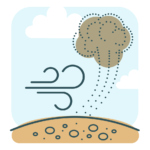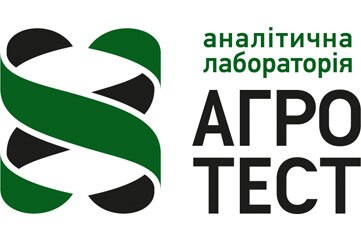Principles of soil health
Principle one: keep the soil covered
The first principle of soil health focuses on preserving the topsoil, also called topsoil.
Why?
The constant removal of crops, lack of cover crops, improper crop rotation, excessive use of chemicals, and harvesting of crop residues expose the soil surface to the sun, wind, and water.

Sun
The bare soil is dark in color, so it is able to quickly absorb the sun’s heat, which in turn increases the soil temperature and the rate of moisture evaporation.

Wind
When the soil dries, light particles such as clay and silt are easily picked up by the wind and carried in a cloud of dust over long distances. In turn, larger particles roll across the surface until the wind slows down or encounters a large obstacle.

Rain
Rain is no less destructive. The force of a raindrop can hit the ground at a speed of 30-80 kilometers per hour. This force easily dislodges soil particles and destroys agglomerates. The loss of aggregation reduces the amount of pore space due to clogging of pores by clay and silt particles. When rain falls on the ground, smaller soil particles clog the pores and seal the soil surface, preventing infiltration and increasing surface runoff.

What to do?
By covering the soil surface, you can reduce exposure to sun, wind and water. The presence of plants and nutritious residues reduces the impact of rain on the soil surface and absorbs wind energy, while capturing suspended soil particles from the air. In addition, soil cover prevents sunlight from reaching the dark soil, maintaining a moderate temperature range that is favorable for microorganisms and soil moisture conservation. Another advantage is that weed seeds have limited access to the sunlight they need to germinate. In addition, crop residues are an important source of food and habitat for microorganisms. When microbes break down the residues, nutrients are converted into nutrients available for further use by plants. It is known that the processes of nitrification, phosphorus and potassium immobilization are associated with microbial activity.
This article is based on information kindly provided by Ward Laboratories, Inc.
Write to us
and we will find an opportunity
for cooperation


